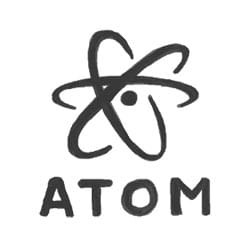How To Install Atom Text Editor on Fedora 40

Atom, a powerful and versatile text editor, has gained immense popularity among developers and programmers due to its extensive features and customization options. With its sleek interface, cross-platform compatibility, and active community support, Atom has become a go-to choice for many professionals in the field[1]. Fedora 40, the latest release of the popular Linux distribution, offers a stable and secure environment for software development. In this article, we will guide you through the process of installing Atom on Fedora 40, enabling you to harness the full potential of this exceptional text editor on your Fedora system.
Before proceeding with the installation of Atom on Fedora 40, it is essential to ensure that your system meets the necessary requirements and is up to date. Atom requires a 64-bit processor and at least 1 GB of RAM for optimal performance[3]. To update your Fedora 40 system, open the terminal and run the following command:
sudo dnf updateThis command will fetch and install any available updates for your Fedora 40 system, ensuring that you have the latest packages and security patches.
Methods of Installation
Fedora 40 offers multiple methods to install Atom, catering to different user preferences and requirements. You can choose to install Atom using the RPM package, the DNF package manager, or by building it from the source code. Each method has its advantages, and we will explore them in detail in the following sections.
Installing Atom Using RPM Package
One of the simplest ways to install Atom on Fedora 40 is by using the RPM (Red Hat Package Manager) package. Follow these step-by-step instructions to download and install the Atom RPM package:
- Visit the official Atom website.
- Click on the “Download” button and select the “RPM” package for Fedora.
- Once the download is complete, open the terminal and navigate to the directory where the RPM package was saved.
- Run the following command to install Atom using the RPM package:
sudo dnf localinstall atom.x86_64.rpmReplace “atom.x86_64.rpm” with the actual filename of the downloaded RPM package. The `dnf localinstall` command will handle the installation process, resolving any dependencies and configuring Atom on your Fedora 40 system.
To verify the installation, you can launch Atom from the application menu or by running the following command in the terminal:
atomInstalling Atom Using DNF Package Manager
Another convenient method to install Atom on Fedora 40 is by using the DNF package manager. DNF is the default package management tool in Fedora, and it simplifies the installation process. Follow these steps to install Atom using DNF:
- Open the terminal and run the following command to import the Atom GPG key:
sudo rpm --import https://packagecloud.io/AtomEditor/atom/gpgkey- Add the official Atom repository to your Fedora 40 system by running the following command:
sudo dnf config-manager --add-repo https://packagecloud.io/AtomEditor/atom/repos/fedora/40/x86_64- Once the repository is added, you can install Atom using the following command:
sudo dnf install atomDNF will handle the installation process, downloading the necessary packages and resolving any dependencies. After the installation is complete, you can launch Atom from the application menu or by running the `atom` command in the terminal.
To keep Atom up to date, you can use the following command:
sudo dnf update atomBuilding Atom from Source
For advanced users who prefer more control over the installation process, building Atom from the source code is an option. This method allows you to customize the build options and ensures that you have the latest version of Atom. Here’s how you can build Atom from source on Fedora 40:
- Install the necessary dependencies and tools by running the following command:
sudo dnf install git nodejs npm make gcc-c++ libsecret-devel- Clone the Atom repository from GitHub using the following command:
git clone https://github.com/atom/atom.git- Navigate to the cloned repository directory:
cd atom- Install the required Node.js packages:
npm install- Build and install Atom:
script/build
sudo script/grunt installThe build process may take some time, depending on your system’s specifications. Once the installation is complete, you can launch Atom from the application menu or by running the `atom` command in the terminal.
Post-Installation Steps
After successfully installing Atom on your Fedora 40 system, you can launch the text editor and start exploring its features. Upon launching Atom for the first time, you will be greeted with a welcome screen that provides an overview of the editor’s capabilities and customization options.
Atom offers a wide range of configuration settings and themes that allow you to personalize your coding environment. You can access these settings by clicking on the “Edit” menu and selecting “Preferences” or by using the keyboard shortcut `Ctrl+,`. From the settings view, you can modify the editor’s appearance, behavior, and installed packages[4].
Troubleshooting Common Issues
While the installation process of Atom on Fedora 40 is generally straightforward, you may encounter some common issues. Here are a few troubleshooting tips:
- Missing Dependencies: If you encounter errors related to missing dependencies during the installation process, ensure that you have installed all the required packages and libraries mentioned in the prerequisites section.
- Permission Issues: If you face permission-related issues while installing or running Atom, make sure you have the necessary privileges. Use the `sudo` command to run the installation commands with administrative privileges.
- Atom Not Launching: If Atom fails to launch after installation, try running it from the terminal using the `atom` command. This will provide you with any error messages that can help in identifying the issue.
Congratulations! You have successfully installed Atom. Thanks for using this tutorial for installing the Atom text editor on your Fedora 40 system. For additional help or useful information, we recommend you check the official Atom website.